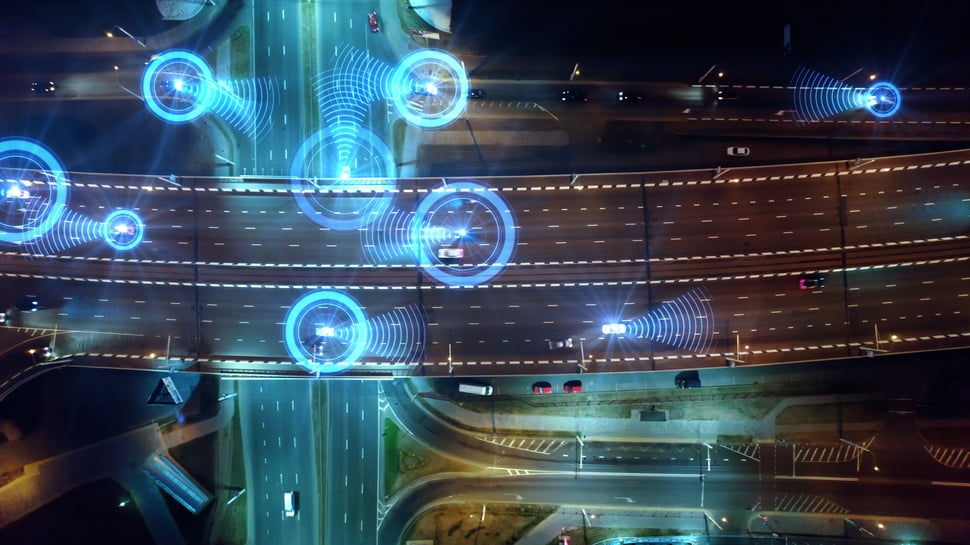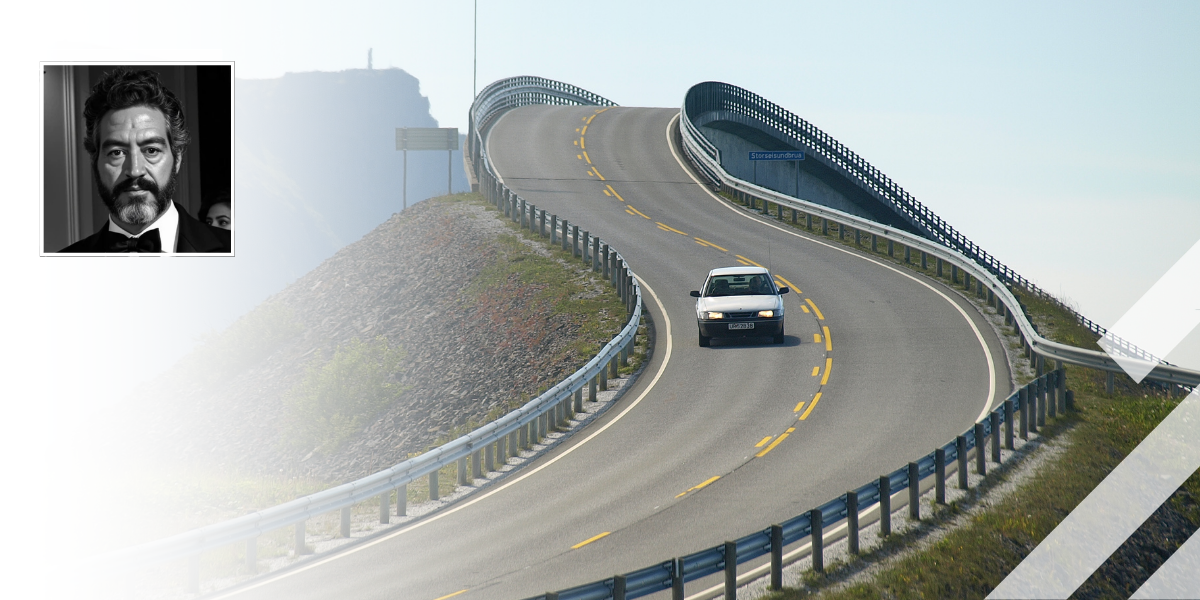Connected vehicle safety
The Data for Road Safety (DFRS) consortium has been helping to drive forward real-world safety use cases for connected vehicles for the last nine years. But now, with the recent agreement that Euro NCAP is including connectivity in its safety rating system, momentum is building faster than ever before, with rapid buy-in from OEMs creating new incentives across the ecosystem.
When Europe's transport ministers gathered in Amsterdam on February 15, 2017, their aim was to translate the promise of connected and automated vehicle services into tangible safety benefits – what began that day was the consortium known as Data for Road Safety (DFRS). The consortium operates under three pillars: a General Assembly for high-level governance, a Steering Committee with representation from different stakeholder types, and a Technical Group that handles the day-to-day work of making data sharing function in practice.
DFRS’s stated aim is to enhance safety for all road users by maximizing the reach of safety-related traffic information (STRI) generated by vehicles and infrastructure. It aims to do this by supporting the implementation of laws on access to safety data; prioritising access to that data; and by enabling collaboration between vehicle manufacturers and countries.
While the organisation is founded on collaboration between the public and private sectors, with road operators such as the UK’s National Highways and the Netherlands’ Ministry for Infrastructure and Water Management working alongside the likes of Ford, Mercedes and TomTom, until recently the partnership has lacked a tangible, consumer-facing element. But in May 2025 DFRS secured a partnership that will accelerate its impact, by reaching car-buyers themselves – a memorandum of understanding (MOU) was signed with Euro NCAP, the respected vehicle-safety rating organization, which means vehicles that contribute to and utilize DFRS data can now earn points toward Euro NCAP's coveted five-star safety rating. So now vehicle OEMs are truly incentivised to include connectivity in their vehicles and by extension consumers will begin to look for it.
“What we have brought to the table is the digital world,” says Joost Vantomme, who chairs the DFRS General Assembly and serves as CEO of ERTICO-ITS Europe. “It's a new world, and it's win-win.”
The Euro NCAP game-changer
“We’re incentivizing manufacturers to go in this direction and pushing industry to take on board some of these technologies and utilize them," says Richard Schram, technical director at Euro NCAP.
Euro NCAP's five-star rating system has proven remarkably effective at driving adoption of safety technologies. When the organization added autonomous emergency braking to its rating scheme in 2014, uptake went to nearly 100% within a few years – well before any regulatory mandate.
"If the fitment is very high, then Euro NCAP typically starts pushing for higher performances," says Schram. "We can do the same here. If the pickup is seen to be taken on very quickly within industry on this communication and DFRS, then the next step is to push for higher quality of triggering conditions, new events that we haven't thought about yet."
The requirements for earning DFRS-related points are deliberately designed to ensure genuine participation in the ecosystem. "It has to be sharing all of the results within the ecosystem," says Schram. "It has to be standard on every single car of that model that we rate. So it's standard equipment, not an added option. And there needs to be no subscription to it."
Critically, manufacturers must both contribute data to the DFRS ecosystem and utilize data from all other participants. "OEMs cannot rule out any information which is available in the ecosystem," says Schram. "To gain the additional safety points they are obliged to use everything available, to get the most out of it."
“OEMs cannot rule out any information which is available in the ecosystem. To gain the additional safety points they are obliged to use everything available, to get the most out of it.” – Richard Schram, technical director, Euro NCAP
The official protocol is now live – launching in January 2026, meaning any new vehicle seeking Euro NCAP's ratings will now benefit if it includes the DFRS data-sharing requirements.

Vehicles act as moving sensors, sending safety-related traffic information (STRI) to road authorities and service providers.
Making a difference today
Mohanad Ismail, an associate director at WSP who chairs the DFRS Technical Group, emphasizes what makes DFRS unique: "We have real-time data flowing today. This is not a concept. We're not preparing an environment for the future. We have a lot of data today, and the whole idea and purpose of the technical group is to make this work. We can save lives today."
The technical challenge has been substantial. DFRS members share data across eight categories defined in European Union delegated regulation: temporary slippery roads, animals or people on the road, obstacles or debris, unprotected accident areas, short-term roadworks, reduced visibility from exceptional weather conditions, wrong-way drivers, and unmanaged road blockages.
"Everyone starts on a different page," Ismail says of bringing together public authorities, service providers, and car manufacturers. "The whole idea with the tech group is we are getting to one page. We're summarizing and bringing it all in, because that's the only way we can move forward. Time and time again, we have proved that we're looking at the same goal, but we're coming at it from different angles."
Building momentum
The announcement of the safety-rating points being available from Euro NCAP for connectivity is a sign that now, after years of work, different stakeholders really are on the same page. The signing of the MOU sparked immediate interest from the industry in the second half of 2025.
"OEMs are joining. Even non-European OEMs express an interest to join our European ecosystem. So that's a win-win for safety and road safety,” says Vantomme. There has also been renewed interest from the public sector, with new government bodies signing up to be part of DFRS. "The French Ministry just joined us," says Vantomme. "Norway has joined us also. Some others are in the pipeline. So, there is growing interest from that side. And service providers are also assisting – Haas Alert is helping us with triggering Haas Safety Alerts in vehicles through devices from OEMs.”
"The uptake and interest from OEMs has been really remarkable, in my opinion,” adds Ismail. “We've had email requests going left, right and centre as we got closer to when the new protocol comes in [1 January 2026]. It’s encouraging for us to see this even from non-European OEMs.”
"The uptake and interest from OEMs has been really remarkable. We've had email requests going left, right and centre. It’s encouraging for us to see this even from non-European OEMs.” – Mohanad Ismail, chair, DFRS Technical Group
Ismail attributes this enthusiasm to the non-commercial nature of DFRS. "We're not a commercialized entity. We are doing this for the benefit of road safety. Whether you're European, whether you're non-European, everybody's coming in with that one goal, and to us, that's a big win."
“This is not about making money,” adds Vantomme. “There's nothing about monetizing data. It is a totally different equation from commercialization. This is for the public good."
“This is not about making money… It is a totally different equation from commercialization. This is for the public good.” – Joost Vantomme, chair, DFRS General Assembly
Richard Schram confirms the global significance: "For global Euro NCAP, we're the first continent doing these kinds of things. The US will follow, I think. Australia will follow also from what I heard. China and Japan are also looking at us on this data spaces story."
Vantomme garnered US interest in DFRS during the ITS World Congress in Atlanta in August 2025. “I was discussing DFRS with the road operators in AASHTO and the state DOTs, and they were very interested in what we do in Europe – incentivizing the ecosystem to share data for the public good," he says.
Real world impact
Perhaps the most important question is whether DFRS is actually improving safety on the roads. According to the consortium's recently published Impact Report, the answer is yes – though with appropriate caveats about the current penetration rate of connected vehicles.
"In terms of temporary slippery roads, the cars are like sensors on the road," says Ismail. "We see so much data coming from vehicles around slippery roads. Some of our public authority partners have done analysis and evaluations and correlations of that type of data sets with actual weather data, and it's pretty much there. There's definitely a correlation."
The impact extends beyond data collection to actual response times. "Some of our partners have seen the time saving from DFRS data in terms of accident response – that is an immediate impact today," says Ismail. "Granted that not all the vehicles on the road are connected, but for those cars who are connected and who do experience those events, the likelihood and the chance of early notification and improved response time increases."
Some of the impact already being seen is around collaboration between stakeholders, as different data categories require different sources. While vehicles can detect slippery roads through their sensors, roadworks information must come from road authorities themselves, with vehicles only playing a secondary verification role.
This has led to productive dialogue between traditionally separate sectors. "We're seeing road authorities speak to OEMs and saying, ‘How do you want this data? Why don't you consume certain datasets? Can we improve it in any way?’ So there are different levels where real-life impact is happening,” says Ismail.
The road ahead
The Euro NCAP protocol officially takes effect in 2026, and as it does, all three leaders express optimism tempered with realism about the work ahead.
"This is just a starting point," Schram emphasizes. "As we get used to this cooperation and sharing data like this, there are a lot of opportunities for future applications and future exchange of data for the good of safety. This is where we should all be heading to improve safety and ultimately achieve that Vision Zero goal."
"Connectivity is a big game. It's not only about C-V2X and short-range and direct communication,” says Vantomme. “Road safety is one of the assets, one of the advantages, but we have many others. We need to train these safety-related algorithms as well with this mixed traffic, with automation and non-automation."
Ismail returns to the theme of collaboration that has defined DFRS from the beginning: "As much as we talk technical and as much as this is about data sharing, I would re-emphasize the importance of collaboration and really understanding amongst partners. Richard said Euro NCAP incentivizes, and I like that word, because within DFRS we encourage. We don't mandate anything. That has had a very important role to play in this growth and uptake – encouraging and incentivizing partners and taking them through the journey to understand the value this will bring to them."
For an industry that has spent years discussing the potential of connected vehicles, DFRS and its Euro NCAP partnership represents something rare: a tangible mechanism for turning that potential into reality. "We have become a really innovative ecosystem,” says Ismail. “That’s an update I can give as a reflection and realization."
The data is flowing. The partnerships are forming. And the impact, while still in its early stages, is measurable. For Vision Zero – Europe's ambitious goal of eliminating road fatalities by 2050 – the digital road manager may prove just as important as the physical infrastructure beneath it.
Ismail's long-term vision is ambitious: "In ten years' time, there will be an increased uptake with more vehicles joining this. More market share of connected cars will be on the road. Road authorities will become more mature in understanding data and how they share their data. They will put the proper mechanisms in place to make sure their data is shared accurately with high confidence. At that time, we will see significant impact."
The regulatory context
DFRS operates within a complex European regulatory framework. The initiative is supported by delegated acts under the EU's ITS Directive, specifically regulation stemming from 2013 that mandates certain data sharing for road safety purposes.
The European Commission's Directorate-General for Mobility and Transport (DG MOVE) is now reviewing this regulatory framework. "They are reviewing the regulatory part, the policy part, and we are one of the key partners with whom they are interfacing," says Joost Vantomme. "This regulation is stemming from 2013 – I don’t think we had any connected cars at the time. Today we do, so it's time to take stock."
Potential new use cases under discussion include emergency-vehicle warnings and end-of-queue warnings for traffic jams. "Emergency vehicle warnings – if you have an ambient light, red light, blue light, meaning there is an ambulance approaching – it would be nice if this information was sent to vehicles," says Vantomme.
Read the Road Safety Impact Report
This article is an edited preview of one that will appear in the forthcoming Intertraffic World 2026.
Photographs: AdobeStock
Share your story
Do you have an innovation, research results or an other interesting topic you would like to share with the professionals in the infrastructure, traffic management, safety, smart mobility and parking industry? The Intertraffic website and social media channels are a great platform to showcase your stories!
Please contact our Sr Brand Marketing Manager Carola Jansen-Young.
Are you an Intertraffic exhibitor?
Make sure you add your latest press releases to your Company Profile in the Exhibitor Portal for free exposure.

La IA Revoluciona la Industria del Transporte de Carga en México: Ahorro de Combustible, Mayor Productividad y Seguridad Vial
02 January 2025

5 minutos con… Arturo Cervantes: Impulsando la Seguridad Vial en México
28 November 2024

Reforma de Seguridad Vial en Chile: Invirtiendo la Tendencia con Políticas Inteligentes y Tecnología para una América Latina más Segura
28 November 2024
Get up to speed on the mobility industry - our newsletter straight to your inbox!
